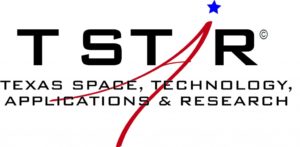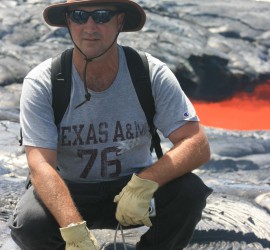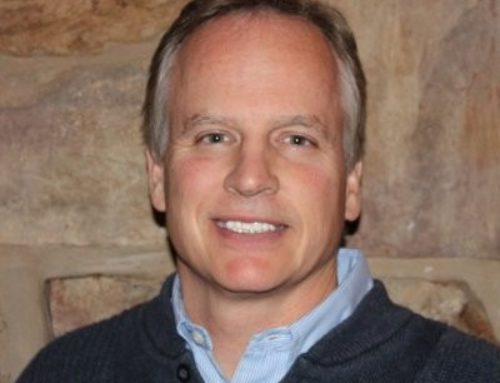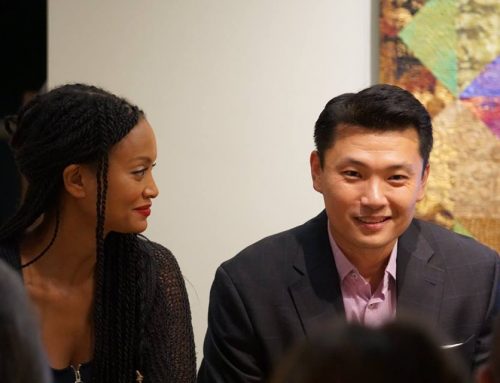An Conversation with Matt Leonard of T-STAR

Matt Leonard created T-Star with the hope of inspiring and training the future of the Space Industry. He joined the Innovation underground following 25 years with NASA, and his incredible portfolio ranges from youth education programs to creating the next lunar rover.
BG: You’re from small-town Nebraska, and now you’re talking about the moon. How did that happen?
M: When I was a kid, I wanted to be an astronaut. I got an Air Force scholarship and one of the folks in my small town had gone to the Air Force Academy. I didn’t get into the AFA, so I said where should I take this? And he said the only place to go is Texas A&M- so I went there. I was in the Corps, and still had the passion that I wanted to be an astronaut.
I ended up in one of the reductions of force times, so I was getting out with my pilot’s slot…[and] they told me they weren’t going to honor my pilot application. So at the time I was crushed, that was my route – 20 years old and suddenly I had lost my whole route to being an astronaut. But I got a job with an Aircraft company in St. Louis and worked there for three years on the FA Team Hornet. And then from there, kept poking at friends at NASA about jobs coming up [until] getting back down to Houston.
BG: What do you think was the biggest factor in bouncing back after your huge setback?
M: My parents instilled in us that there was no roadblock too big – you just had to figure out how to get over it, under it, or through it.

BG: And then from there, you became an entrepreneur?
M: I had 25 years at NASA and I don’t think I ever became an entrepreneur; I think I’ve always been that. Even at NASA, I bounced around to different jobs that were increasingly important and more fun. It was just, the skillset I had…I like to manage technical teams and solve technical problems. We had a bunch of different things that as they came up, I kept getting put on them and kept moving on to bigger and bigger projects. I was in the EVA office, which is Extra-Vehicular Activity- space walks- and built tools for the astronauts to use when they were outside of their space suits.
You probably don’t remember this, but [our] shuttle program would dock to the Russian Mirr space station, and we were doing that to practice for the international space station. The Mir had a [issue] so we had to figure out what was going on…we had 11 days, and we had to put together a tool that would cut a launch retention bar that was inside a part of the vehicle that you couldn’t reach – like 10 feet inside – so you had to build a cutter that had handles on it that were 8 feet long that could operate and cut that bar. And we did it.
I remember my boss…said: do you have every single person at this Space Center working on your project? And I said no, I don’t think so and he said – well then you’ve got margin! You can get it done. And that’s the kind of thing folks instilled in me is: you just don’t give up on anything. You can always look for ways to solve the problem.
BG: And do you think it’s that excitement of working with space exploration that you want to convey; what is it that you want to give to the next generation?
M: I want them to see space exploration as something that’s accessible. A lot of people think: oh wow, I can’t do that kind of technical stuff. But I want to break it down so that they can see it is accessible, and something that they can do successfully.
One of my talks that I give is a bale of wire and a pair of pliers. It’s basically I’d be working on these complex problems at NASA, and people’d be talking about a Delta B of this, and the exchange of that, and I’d say “Look, let’s just break this down”. And I’d break it down to when even I could understand it, and I’d go “Oh, well here’s how we could fix that”. So the whole idea was, on the farm, two hours away from the nearest store, you have to figure out how to fix it. So a bale of wire and a pair of pliers was how to fix it.
BG: Do they keep those on the space station? (laughs)
M: Well we had duct tape later on, and they do have that on the space station. Take that whole idea – that you can break anything down to a problem you can figure out, and then you can attack it from that angle, I think that is the most interesting to convey.
And maybe more as a project manager. The way I look at it, somebody’s got a problem and if you can break it down to what are the requirements for the problem, then you can start to spec out the possible solutions.
BG: So with TSTAR, what does success look like?
M: So we are actively working to build the Center for Excellence for Aviation and Aerospace Education. CXAAE. … My vision for that is that we’ll do aerospace and aviation curriculums. So we’re going to have a curriculum for pilot training, an air traffic controller, aircraft mechanic, and electronics technician. On the aviation side, students can come in and take those classes and get certificates, plus you can get your pilots license…. But as they’re doing that, we’re going to be associating with the university so that they can get college credits for all this as well. If you take a 3-hour aviation science class, the lab is flight time.
BG: Do you have a secret to innovation?
M: I don’t think I have a secret to innovation, it’s just different projects. When people put out a crazy idea, I say: “why not?”. And then we talk about it a little bit more, and by the end of the conversation, they’re saying “We really could do that!”. We’ve got some projects – the Stafford is a great place for innovation – we’ll be sitting there talking about a complex process or problem, “I don’t know If we could do this, or I don’t know if we can do that” and someone will throw out an idea. We’ll keep pulling on that string; keep tugging at it, and something will [eventually seem to] work.
BG: Do you approach innovation as an engineering problem in that regard?
M: I guess so, because I am an engineer at heart. And maybe more as a project manager. The way I look at it, somebody’s got a problem and if you can break it down to what are the requirements for the problem, then you can start to spec out the possible solutions. So if I can bound the problem with the requirements, then I can put a box around it, [and] I can start defining what’s inside the box.
BG: What do you think is the future of the space industry?
M: I think it’s exciting. I think commercial companies that are coming in make it really interesting. For a NASA guy, that’s not the right script I’m supposed to have. But I think NASA is good as a strategist, and commercial companies can do the implementation. The more we can get commercial companies incentivized to do what they’ve learned, the better that it is for everybody. Because that’ll grow the industry faster than NASA would by funding small projects. It’s [going to be] the commercial companies coming in and building big projects.
BG: Do you think this will make NASA take a step back in their role as a strategist, or will it force them to compete?
M: In the Apollo days, NASA had some engineers that were hands-on and doing things, because there was nobody in the industry that was doing those things. …Rather than NASA having to be the experts in each of those fields, it’s better for NASA to rely on the companies that are the experts in those fields. So it’s back to the whole project management thing – NASA gives the requirements, and contractors put out the performance specifications and implementation, rather than NASA trying to build the whole thing themselves.
I want them to see space exploration as something that’s accessible.
BG: And these kinds of competing industries gives a market to students coming out of programs like TSTAR. So what is one piece of advice to those starting this journey, and other entrepreneurs?
M: That’s hard. I loved my 25 years at NASA, but when I tell my students when they’re doing their capstone projects and they’re like “yeah, I might want to be an entrepreneur – I have this really cool product idea” – now is the time to do it. When you’re young, a young person who has no house, no payment obligations, you know how to live off of ramen noodles, you’re an expert on living off of ramen (laughs), that’s when you should go try out your ideas.
BG: So are you suggesting entrepreurship today and sacrificing industry experience?
M: Well, that’s why I said it’s hard. I loved the experience I got, and I guess, the way I look at it – everybody says “now you’re an entrepreneur” and I’ve always seen myself as an entrepreneur. I think when you take that product idea, that innovation idea, and go straight out of school and do something with it, or go work for a company. If you’ve got the entrepreneur spirit, that’s going to benefit you either way.
BG: What services has the Innovation Underground helped you out with?
M: (Laughs), everything! The space, for one thing, has been incredible. Jose and I have talked through how to do Center of Excellence in Aviation, and other projects that we’re doing. We did a space act agreement with NASA that we evaluated if we could do a mission control center here in Bryan-College Station as part of the Center of Excellence, and Jose was instrumental in helping that happen. And that was actually the first project when I got out of NASA. So we have all of the requirements that we need so we could build a mission control center here for operating – and we are building Cube-sats. So we could monitor them from here.
M: Another project that we’re doing is a lunar rover. That one should go up in 2021, and we’ll do science for NASA for the first two days, and then after that science is done, they’re going to turn the rover back over to us and we have the rover as long as we can keep it alive on the moon. We’ll have it up there to tool around and see what we can find.




